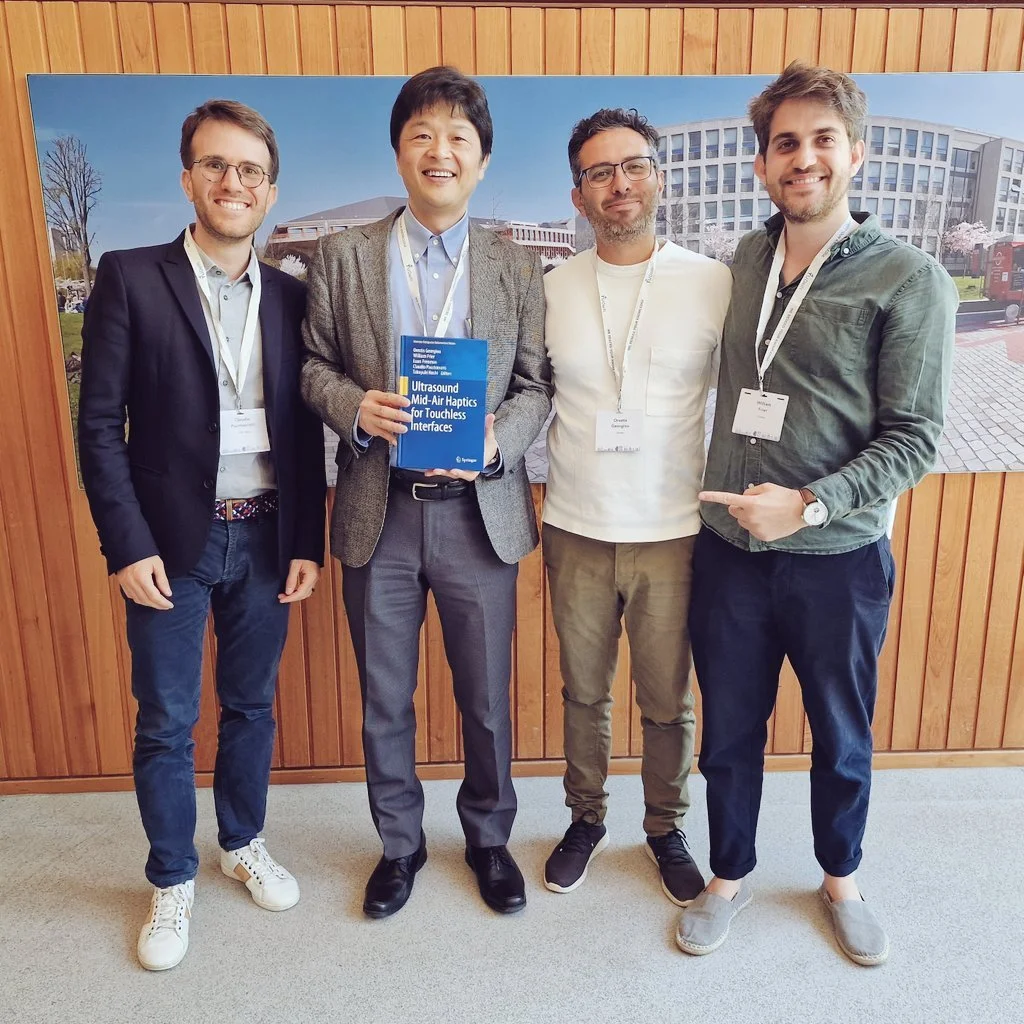“Re: You’re Going to Glasgow.”
Prologue
When I joined Ultrahaptics in 2017, little did I know that my very first assignment would spark an eight-year journey with a technology that, at the time, felt like pure science fiction.
“We’re going to levitate whaaat?!”
That was my reaction when, two weeks into the new job, I got an email from the CTO and co-founder, Tom Carter, saying I’d be flying to Glasgow to kick off a European project called Levitate. I barely knew where the kitchen was at the office, and now I was being asked to help launch a project that sounded straight out of a Sci-Fi novel, which, to be fair, matched the décor: our meeting rooms were all named after legendary futurists and imaginative worlds. There was Arthur Clarke, Asimov, and of course Yoda. We believed in ideas that stretched reality, and we wanted our meetings to feel as if anything was on the table. As if the impossible was just a prototype away.
When, I arrived at the meeting in Glasgow, I was introduced to a fair number of researchers, scientists, and professors, all of whom I’ve had the pleasure to work with and be inspired by over the coming few years. The highlight of the meeting however was a phenomenon that felt too elegant to be useful: particles floating around in mid-air, controlled by invisible forces. It was mesmerising, but it didn’t yet have a place.
Now, in 2025, it does. The science that once lived on lab benches, prototypes made of Lego bricks, and PowerPoint slides is now moving into real-world systems. We’re not done yet — but the direction is clear.
Interlude
Over the next few years at Ultrahaptics — which later became Ultraleap — that early glimpse of mid-air manipulation turned into a focused pursuit of mid-air haptics using ultrasound. I had the privilege of helping advance this field, not only through our internal R&D efforts, but also through collaborative European research projects that brought together engineers, neuroscientists, designers, and futurists.
In my role as Director of Research and later as Head of R&D Partnerships, I led a brilliant, cross-functional team exploring what it meant to feel things that weren’t there — tactile sensations rendered entirely in the air. We pushed boundaries in both science and user experience, and I had the chance to mentor some incredibly talented individuals, many of whom have gone on to lead their own labs and teams.
The EU-funded Future and Emerging Technologies (FET) programme became a major driver of this journey — not just in terms of the work itself, but in how the work began. After Levitate, I played a central role in developing two ambitious, multi-million euro proposals that would go on to define the next phase of mid-air technology research:
H-Reality — exploring how touch and presence could be fused for next-generation immersive interfaces.
Touchless — a pandemic-era project that reimagined public interaction, using gesture and haptics to create safe, intuitive, touch-free control systems.
I was a core contributor to the design and drafting of both proposals, helping shape their vision, structure, consortiums, and collaborative frameworks. And once Touchless was funded, I went on to lead the project through its most critical stages, from coordination and reporting to final delivery. Each project brought new challenges, new partners, and new insights, not just into the physics of ultrasound, but into how people interact with machines, with each other, and with the environment.
One unexpected highlight? BMW invited me to record a podcast with their new AI-powered concept car personification called “Dee”; a futuristic interface that blurred the lines between human and machine interaction. It was surreal, but also deeply validating: proof that our research was resonating beyond academia and into the world of design, automotive, and future technology narratives.
What’s next?
After years immersed in deep research and strategic partnerships at Ultraleap, I didn’t step away by choice. Like many others, I was affected by a sequence of redundancies and my role was being discontinued. But I had an option: stay part-time and finish Touchless.
It wasn’t easy. But I believed in the project. I had poured so much time and energy into that chapter, I didn’t want to walk away before the story was complete. Touchless had to be delivered, and I wanted to see it through.
In February 2025, the project was successfully completed. It was one of the most intense and rewarding moments of my career, with too many milestones, culminations, and exponential branching-out points that I could possible mention in this blog. But if I had to choose my one two most personal ones, it’d be this book and this video.
Meanwhile, to make up for the income gap due to part-time work, I started consulting. Not out of long-term ambition, but necessity.
It was around that time that I also realised something important: my superpower was writing, winning, and managing R&D grant proposals. I’d done it for years within Ultraleap, but now I began to wonder whether that same skill could be valuable on its own. The first test came, almost by accident. A friend of mine was looking for funding, and my wife suggested to him that I could help with that. So we teamed up. I helped him and his co-founder write a proposal. And together, we won €250,000. That funding helped them build a team and get their company off the ground.
Impact!
That small win was a proof of concept. It showed me that my skills could create momentum, even outside the structure of a larger organisation and in domains unrelated to mid-air haptics. So I gave this consulting path a name — “Orestify” — (shamelessly adapted from a competitor called “Grantify”) and I started letting my friends and collaborators know:
If you’re trying to get your R&D project funded, I can help you write a winning proposal.
One of the people who responded was Sri — the original co-founder of Ultrahaptics, and one of the key architects of Levitate whom I had first met in Glasgow in 2017. As it turns out, Sri was now leading an ambitious new venture in London called AcoustoFab, bringing the very ideas we explored in Levitate out of the lab and into the real world. Sri brought me on under Orestify to help write several proposals. At first, I thought this would be another temporary project — a fascinating one, sure, but still just consultancy.
But the more time I spent with the AcoustoFab team, the more something clicked.
The vision was clear.
The science was mature.
The opportunity was real.
And gradually, the work evolved into a deeper commitment.
In July, Sri asked me to join full time as R&D Funding Lead.
So is AcoustoFab a continuation of Levitate?
Not directly. But there’s an invisible thread — of people, of ideas, of unfinished conversations about what acoustic manipulation could be.
What we’re building now is something new: Our flagship platform, is a contactless liquid-handling system designed to radically simplify and miniaturize workflows in lab automation. Basically, what that means is that complex lab tasks, like mixing liquid samples, running reaction tests, moving samples between workflow steps, or adding the right amount of reagent liquid at the right time, without ever using a traditional container, can now be done in mid-air, automatically, cleanly, and without contamination. How does it work? By using focused acoustic forces to defy gravity and steer nanolitre droplets in mid-air, AcoustoFab eliminates (or reduces) the need for pipettes, plastics, sample loss, and dead volume while also compressing complex workflows into clean, software programmable steps.
The result? Faster, cleaner, and greener R&D science, with far less waste and a lot more flexibility.
It’s not a demo → It’s more than a prototype → It works.
And it’s already showing promise in key biopharma applications, e.g., proteomics, crystallography, and Lyobead production, where precision, contamination-free handling, and seamless integration with analytics are critical.
For me, joining AcoustoFab isn’t a pivot. It’s a continuation. A return.
I’m excited to embark on this not-so-new journey — one that (for me, at least) started in Glasgow in a room full of levitating droplets, and now moves forward with a team and a vision I deeply believe in.
The future is contactless. And it’s closer than you think.
PS. If you’re working in lab automation, biotech, advanced manufacturing, or just curious about what sound can do — let’s talk.
Reflection
Looking back, I stayed with Ultraleap because I believed in what we were building. Even when my role was reduced, even when it meant sacrificing part of my salary — I chose to stay and finish Touchless because I felt it mattered.
To make it work, I found another path. I helped a friend secure R&D funding. That turned into a win. That win turned into Orestify. And before I knew it, I was helping more startups find their feet — writing proposals, telling stories, unlocking potential.
And now, I’ve come full circle.
I’m back in the world of emerging tech without even sending out a single a CV, surrounded by a team of people I trust, who believe in the mission and in each other. It feels like the kind of alignment you can’t plan — only recognise when it happens.
Some might call it luck. Others might call it momentum.
Me? I think the universe conspired.



